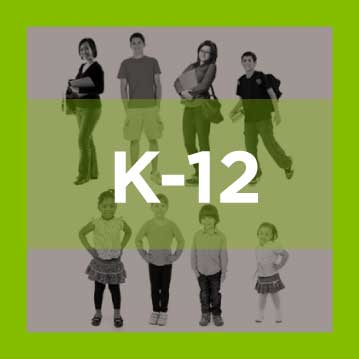Learning does not occur in a vacuum. Most, if not all, students carry outside influences with them when they come to school. For students that come to school hungry and/or undernourished, entering class ‘ready to learn’ is an unrealistic expectation. Research shows that hunger severely impedes students’ ability to focus, and, more specifically, that a lack of adequate consumption of fruits, vegetables, or dairy products is associated with lower grades among students. Furthermore, deficits of specific nutrients are associated with higher rates of absenteeism and tardiness.
In addition to state and local efforts, there are several federal programs to address student hunger. Funded and nationally administered by the United States Department of Agriculture (USDA) Food and Nutrition Service, four primary federal programs exist to ensure students are well-fed and able to focus on learning throughout the school year: the National School Lunch Program, the Fresh Fruit and Vegetable Program, the School Breakfast Program and the Special Milk Program. At the state level, these programs are often run by state education agencies.
The USDA supports and supplements these programs through a variety of initiatives to improve school meal programs, incorporate local foods and feed kids when school is out:
- Improving meal programs: The Team Nutrition initiative provides training to child nutrition professionals, and seeks to improve practices of child nutrition programs, by providing resources to schools, child care settings, and summer meal sites. One of the primary purposes of this initiative is to communicate healthy food and activity options through materials (handouts, posters, games, songs, etc.), developed via programs such as MyPlate, which give children, parents, and teachers an opportunity to talk about healthy food and activity choices. Team Nutrition schools are also eligible for voluntary certification through the HealthierUS School Challenge: Smarter Lunchrooms program, which recognizes schools that have created healthier school environments through promotion of nutrition and physical activity. As of January 2017, more than 4,000 schools have been certified.
- Incorporating local foods: The Farm to School Program provides grants, training, technical assistance and research to help child nutrition providers incorporate and promote local foods in school cafeterias, introduce children to local nutrition by holding taste tests/demos of local foods (among other activities), and teach children about the sources of their food by conducting field trips to local farms or orchards. According to the 2015 USDA Farm to School Census, more than 5,200 school districts (encompassing more than 42,000 schools) were participating in farm to school activities, reaching approximately 23.6 million children with information about healthy eating and local agriculture.
- Summer meal programs: Kids need good nutrition when school is out, too. The Summer Food Service Program (SFSP) and the Seamless Summer Option program provide low-income kids and teens with meals when school is out of session. The SFSP operates in schools, parks, camps, community centers, housing projects, churches and other sites. In July 2015 alone, the SFSP provided 2.6 million children with meals each day. Schools that participate in traditional school meal programs that also apply for the Seamless Summer Option program can use the same meal service rules and claiming procedures as those used during the school year, minimizing the paperwork burden of providing summer meals to kids.
Since the passage of the Healthy, Hunger-Free Kids Act in 2010, the nutritional quality of school meals has improved. However, school administrators and other stakeholders feel that this law places unnecessary burdens on school lunch programs, and the challenges of implementing this law have been well-documented. Still, providing children adequate nutrition and giving them an opportunity to focus in school remains a bi-partisan policy goal.










